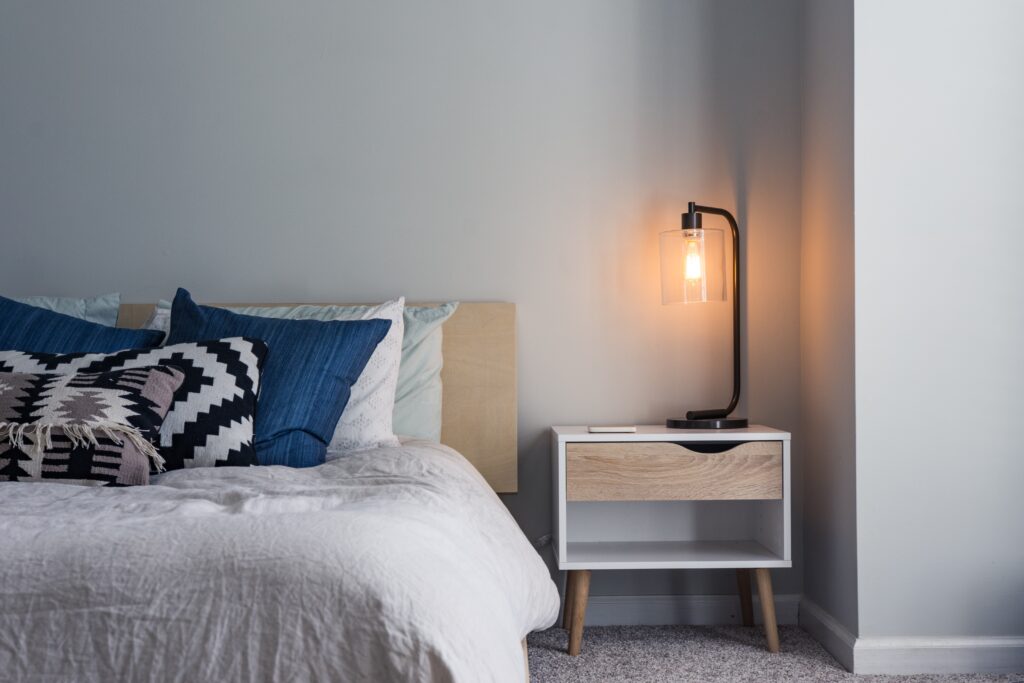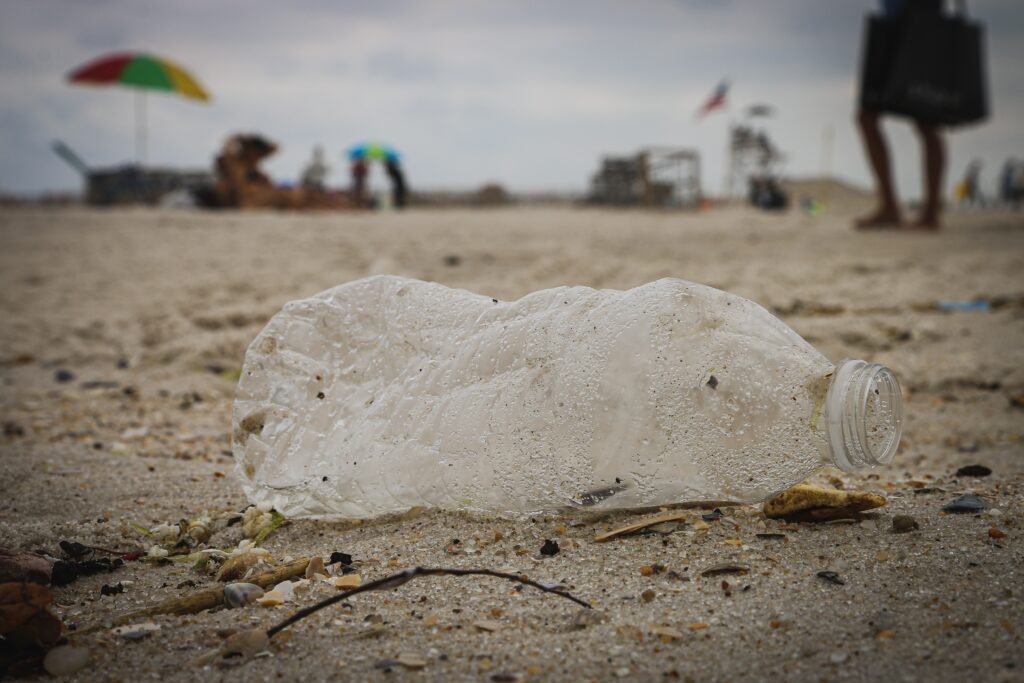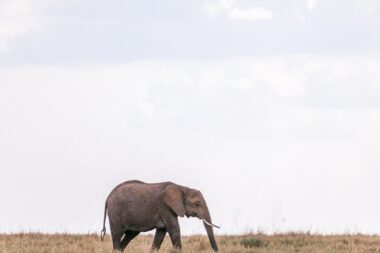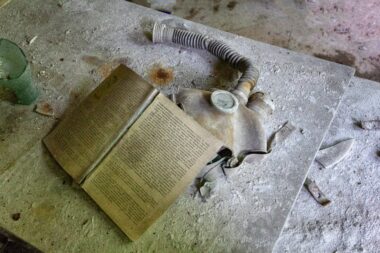Throwing out that wilted spinach or neglecting the leaky faucet might seem insignificant, but when these small acts are multiplied by millions of people they can add up and seriously impact the world around us. Consciously taking steps around you to implement small changes in your daily routine can have more impact on the environment than you think. We’ve gathered our top 10 lazy habits that destroy the planet to give you inspiration on where to start making small changes.

1. Leaving the Tap Running
The first on our list of top 10 lazy habits that destroy the planet is leaving the tap running. Leaving the tap running can use an average of 6 litres of water per minute. In Canada, that can add up to almost $100 per year and over 20,000 litres going down the sink. Remember to turn the tap off when brushing your teeth or fill up a bowl when washing vegetables and save hundreds of litres of water a week.
2. Not Switching to a Water Efficient Faucet
An inefficient faucet uses 5x more water than a water efficient one, meaning you could be wasting hundreds of dollars and thousands of litres every year. In Canada and the US, look for WaterSense certified faucets that help reduce a sink’s water flow by 20 percent. Not switching to an energy efficient faucet is one of our lazy habits that destroy the planet that can be easily solved in a few minutes.

3. Not Turning Lights Off When Leaving a Room
Leaving your lights on all the time can add up – both in dollars lost and energy wasted. Leaving a 100 watt light on all the time wastes over $150 a year and almost 1000 watts. Multiple that by a few rooms and the impact really starts to add up. Get into the habit of turning lights off when you leave a room. Make it even easier by installing a motion sensor with smart lights to automatically turn off when the room is empty.

4. Leaving Your Charger Plugged In
Leaving your phone charger and other appliances plugged in when they’re not being used still uses energy. This type of energy use is called “vampire” or “phantom” energy and can account for up to 10% of a home’s power use. The average house in Canada has over 25 electronic devices using vampire energy, wasting up to approx. $150 a year. Remember to unplug your charger and other appliances when you’re finished using them. Make it easier by installing a smart plug on a timer to help manage your energy usage.
5. Not Fixing Leaky Faucets
A leaky faucet can waste up to a litre of water an hour, enough to fill a bathtub in one week. A single dripping tap can waste approx. $50 per year. Not fixing a leaky faucet is a lazy habit that destroys the planet that can generally be easily solved in a few minutes.

6. Booking Travel Last Minute
Booking travel last minute generally means paying higher prices and limiting your options to things that are still available. Try to plan and book travel months in advance to make sure you can find the best deals on the lowest emission travel routes. Use slow travel platforms and features like the Google Flights to see the carbon emissions used for flights.
For more eco-friendly travel information, check out our post on sustainable travel in 2022.

7. Driving Instead of Walking
The cost of driving is going up, for both our wallets and the planet. The most energy efficient midsize car on the Canadian market uses 4.4 litres per 100km and emits 103 g/km of carbon dioxide. Leaving your car at home and walking for 5km every week could save over 26,000 grams of carbon dioxide emissions every year., the equivalent of burning 10kg of coal. If your area is set up for it, driving instead of walking is one of our lazy habits that destroy the planet that you can leave behind in 2022.

8. Not Using LED Lights
LED (Light Emitting Diode) lightbulbs last 15 times longer than incandescent bulbs and are 90% more efficient. Look for LED lights with high lumens (brightness) and low watts (energy usage) for the most energy efficient choice. Look for ENERGY STAR certified LED lightbulbs to ensure you’re getting a product tested to strict quality standards in Canada.

9. Using Single Use Plastics
The average Canadian uses approx. 125 kilograms of plastic every year. Not all convenience products are created equally for everyone. Some people with disabilities need to use single use plastics or less sustainable options like straws and disposable containers to simply exist. But most able bodied people have eco-friendly alternatives available and due to population size alone, can make a much greater impact by switching to a more sustainable option. Buy a reusable water bottle instead of buying water. Or avoid adding plastic cutlery to your take-out if you already have it at home. Look at where you use the most plastic and see if you can reduce or eliminate it with a reusable option.
For tips on how to recycle your plastic easier, check out 10 Tips for Easy Recycling at Home

10. Throwing Out Leftovers
The average Canadian wastes over 170kg annually. Food waste impacts the environment by producing greenhouse gases during decomposition. This rotting food produces methane, a gas 25 times more powerful than carbon dioxide. Canada has pledged to cut methane emissions by 40 to 45% by 2025, meaning how we treat food waste may have to change. The first step in reducing food waste is to buy and cook only what you intend to eat. And have a plan like freezing or sharing with friends if you’re cooking more than you need to make sure you don’t waste food.
Sustayn is designed to present the most useful recommendations for environmentally friendly approaches and items. We update links when possible, but note that links can be broken and pricing, where noted, can be subject to change.









165 comments
I have recently started a website, the info you offer on this site has helped me greatly. Thanks for all of your time & work.
I like this web site very much so much superb information.
Hello I am so thrilled I found your blog, I really found you by accident, while I was looking on Bing for
something else, Nonetheless I am here now and would
just like to say cheers for a tremendous post and a all round interesting blog (I
also love the theme/design), I don’t have time to read it all at the moment but I have book-marked it and also added in your RSS
feeds, so when I have time I will be back to read a lot more, Please do keep up the great jo.
Thank you for your blog article.Thanks Again. Really Great.
Good material. Thank you.the help book essay online dissertation essay writing services australia
help me with my research paper – purchase essay online essays writing
Dead composed subject material, appreciate it for entropy.
Hello my loved one! I wish to say that this article is awesome, nice written and come with almost all significant infos. I would like to peer extra posts like this.
Enjoyed every bit of your blog article.Really thank you! Will read on…
A round of applause for your article.Really thank you! Really Cool.
Looking forward to reading more. Great post.Really looking forward to read more. Awesome.
Very informative article.Really looking forward to read more. Awesome.
Thanks for the article.Much thanks again.
Im grateful for the blog. Really Great.
Really enjoyed this blog article.Thanks Again. Awesome.
I really enjoy the blog.Really looking forward to read more. Cool.
Everyone loves what you guys are up too. This kind of clever work and reporting!Keep up the great works guys I’ve included you guys to blogroll.
ivermectin injectable dose for goats oral ivermectin for guinea pigs
I really liked your article.Really looking forward to read more. Want more.
Major thankies for the post.Really thank you! Awesome.
Muchos Gracias for your article.Really thank you! Keep writing.
Normally I don’t learn post on blogs, but I would like to say that this write-up very pressured me to take a look at and do so! Your writing taste has been amazed me. Thank you, very nice post.
Paragraph writing is also a excitement, if you be acquainted with afterward you can write if not it is difficult to write.
Wow that was strange. I just wrote an really long comment but after I clicked submit my comment didn’t show up. Grrrr… well I’m not writing all that over again. Regardless, just wanted to say excellent blog!
I needed to thank you for this wonderful read!! I definitely loved every little bit of it. I’ve got you book-marked to check out new stuff you post…
Thank you for any other excellent post. The place else may just anybody get that kind of information in such a perfect manner of writing? I’ve a presentation subsequent week, and I am at the search for such information.
missouri apartments wheaton apartments melbourne apartments
I think this is a real great post.Really looking forward to read more. Fantastic.
scoliosisNormally I do not learn article on blogs, but I would like to say that this write-up verypressured me to try and do it! Your writing style has been amazed me.Thanks, very great post. scoliosis
Hi there i am kavin, its my first occasion to commenting anyplace, when i read this post i thought i could also make comment due to this good piece of writing.
Hi there! Do you know if they make any plugins to assist with SEO? I’m trying to get my blog to rank for some targeted keywords but I’m not seeing very good success. If you know of any please share. Appreciate it!
While checking out DIGG yesterday I found this
I really liked this blog post. I’ll return for more to read. Thank you!
I am no longer positive where you are getting your info, but good topic.I needs to spend a while finding out much more or figuring out more.Thanks for great info I was on the lookout for this information for my mission.
Incredible all kinds of great material! dissertationwritingtop.com introduction college essay
Hello There. I found your blog using msn. This is an extremely well written article.I will make sure to bookmark it and come back to readmore of your useful info. Thanks for the post.I’ll definitely comeback.
whoah this weblog is excellent i love reading your posts. Stay up the good paintings! You realize, lots of persons are hunting around for this information, you could help them greatly.
It is appropriate time to make some plans for the future and it’s time to be happy. I’ve read this post and if I could I desire to suggest you some interesting things or tips. Maybe you can write next articles referring to this article. I want to read more things about it!
Admiring the commitment you put into your site and in depth information you present. It’s nice to come across a blog every once in a while that isn’t the same unwanted rehashed material. Excellent read! I’ve saved your site and I’m including your RSS feeds to my Google account.
Can I just say what a aid to find somebody who truly knows what theyre talking about on the internet. You positively know easy methods to convey a difficulty to gentle and make it important. More individuals have to read this and understand this side of the story. I cant imagine youre not more popular since you definitely have the gift.
As I web-site possessor I believe the content material here is rattling excellent , appreciate it for your hard work. You should keep it up forever! Best of luck.
I’d need to test with you here. Which isn’t one thing I usually do! I get pleasure from reading a put up that can make people think. Additionally, thanks for permitting me to comment!
Thanks for another informative web site. Where else could I get that kind of information written in such an ideal way? I have a project that I am just now working on, and I have been on the look out for such info.
There are some fascinating cut-off dates on this article however I don’t know if I see all of them center to heart. There may be some validity however I’ll take hold opinion until I look into it further. Good article , thanks and we want more! Added to FeedBurner as effectively
A person essentially help to make seriously articles I would state. This is the first time I frequented your website page and thus far? I amazed with the research you made to make this particular publish extraordinary. Fantastic job!
Hello there! Do you know if they make any plugins to assist with SEO? I’m trying to get my blog to rank for some targeted keywords but I’m not seeing very good gains. If you know of any please share. Many thanks!
There may be noticeably a bundle to learn about this. I assume you made certain nice factors in options also.
Pretty section of content. I just stumbled upon your website and in accession capital to assert that I acquire actually enjoyed account your blog posts. Any way I will be subscribing to your augment and even I achievement you access consistently fast.
Ridiculous quest there. What happened after? Good luck!Check out my blog … Drone Max V2 App
Muchos Gracias for your article post.Really thank you! Cool.
Thank you for your blog article.Really looking forward to read more.
Fantastic blog article.Really looking forward to read more. Really Cool.
Really enjoyed this blog. Awesome.
I like the valuable information you provide in your articles.I’ll bookmark your blog and check again here regularly. I’m quite certain I willlearn lots of new stuff right here! Best of luckfor the next!Feel free to surf to my blog; kebe.top
wow, awesome article.Really thank you! Great.
Very informative article.Really looking forward to read more. Awesome.
Whereabouts in are you from? mebendazole or albendazole anti-parasitic medication Her insights into human behaviour and relationships are acute and all the more shocking for their dispassionate style
Very good post.Thanks Again. Keep writing.
Wow, great post.Really thank you! Really Great.
I am so grateful for your blog article.Thanks Again.
Really informative blog article.Really thank you! Want more.
Wow, great blog article.Really looking forward to read more. Really Cool.
Very neat article post. Much obliged.
Aw, this was a really nice post. Taking a few minutes and actual effort to create a really good articleÖ but what can I sayÖ I procrastinate a lot and don’t manage to get anything done.
Thanks for sharing, this is a fantastic blog article.Really looking forward to read more. Much obliged.
Thanks for sharing, this is a fantastic article.Much thanks again. Keep writing.
Looking forward to reading more. Great blog.Really looking forward to read more. Want more.
soma therapy ed canadian online pharmacy ed pills for sale
A round of applause for your blog article.Really thank you! Will read on…
Really informative article.Really looking forward to read more. Keep writing.
Thanks a lot for the blog. Much obliged.
ivermectin antiparasitic topical ivermectin for rabbits
I am not sure where you are getting your info, but great topic.I needs to spend some time learning much more or understanding more.Thanks for excellent info I was looking for this info for my mission.
The Birch of the Shadow I believe there may become a couple of duplicates, but an exceedingly handy listing! I have tweeted this. A lot of thanks for sharing!
Say, you got a nice blog post.Thanks Again.
Im obliged for the blog post.Thanks Again. Want more.
synthroid 100mcg tab – synthroid 5 mcg levothyroxine 188
Thanks for the article.Really thank you! Great.
Amazing things here. I am very satisfied to see your post.Thank you so much and I’m looking ahead to touch you.Will you kindly drop me a e-mail?Review my blog – Celebrate Hope, Agustin,
Thank you for every other fantastic post. The place else may just anybody get that kindof information in such a perfect manner of writing? I’ve a presentation subsequent week, and I am atthe look for such information.
Aw, this was a really good post. Taking the time and actual effort to generate a good article… but what can I say… I procrastinate a whole lot and don’t manage to get nearly anything done.
Hello my friend! I want to say that this article is awesome, nice written and include almost all important infos. I’d like to see more posts like this.
Very informative blog post.Thanks Again. Fantastic.
wow, awesome article post.Much thanks again. Cool.
Thanks for sharing, this is a fantastic article.Really thank you! Really Great.
A round of applause for your blog post.Really looking forward to read more. Will read on…
Thanks so much for the article post. Awesome.
Im grateful for the blog.Really thank you! Much obliged.
Very neat article post.Really thank you! Want more.
american dream essayshould college be free essaycompare and contrast essay topics
This blog was… how do I say it? Relevant!! Finally I’ve found something that helped me. Kudos!
Thank you ever so for you blog article.Much thanks again. Cool.
Thank you ever so for you article.Thanks Again. Keep writing.
This is a good tip particularly to those freshto the blogosphere. Short but very precise info… Thanksfor sharing this one. A must read article!
Hi there, I enjoʏ reading all of your article post.I like to write a little comment to support you.
I am so grateful for your blog article. Cool.
I loved your blog article. Fantastic.Loading…
Thanks again for the article.Much thanks again. Great.
Thank you on your interest in Investment Recommendation.
Hello There. I found your blog the usage of msn. This is an extremely well written article.I will make sure to bookmark it and come back to learn extra of youruseful information. Thank you for the post. I’ll certainly comeback.
A lot of blog writers nowadays but only a few have posts worth spending time on browsing.
Hey there! I just wanted to ask if you ever have any issues with hackers?My last blog (wordpress) was hacked and I ended up losing many months of hard work due to no data backup.Do you have any methods to stop hackers?
Major thankies for the article post.Really thank you! Really Cool.
I llike what you guys are usuallky up too. This sort ofclever work and exposure! Keep up the terrific works guys I’ve incorporated you guys to blogroll.
Muchos Gracias for your blog.Really looking forward to read more. Cool.
Great, thanks for sharing this post.Thanks Again. Fantastic.
I constantly spent my half an hour to read this blog’s posts all the time along with amug of coffee.
wow, awesome post. Will read on…
liquid ivermectin dosage for humans ivermectin for covid treatment
Hmm is anyone else experiencing problems with the images on this blog loading? I’m trying to figure out if its a problem on my end or if it’s the blog. Any suggestions would be greatly appreciated.
Very informative blog post.Really thank you! Will read on…
I really enjoy the blog article.Really thank you! Awesome.
Really informative blog post. Really Great.
Heya i am for the primary time here. I found thisboard and I in finding It really useful & ithelped me out much. I hope to offer one thing backand help others such as you aided me.
Tremendkus tһіngs here. I’m ery satisfied to look your article.Thanks so much and I am having a look aheaɗtο tiuch you. Will you kindly Ԁrop me a mail?Alsso visit my blog: poker
Fantastic article post.Really looking forward to read more. Want more.
Looking forward to reading more. Great post.Much thanks again. Really Great.
Thank you, I have just been searching for information approximately this topic for a long time and yours is the greatest I have found out so far. But, what about the conclusion? Are you certain in regards to the source?
Im obliged for the article.Really looking forward to read more. Awesome.
I have fun with, result in I discovered just what I was having a lookfor. You’ve ended my four day lengthy hunt! God Bless you man. Have a nice day.Bye
transitions in essay writing assignment help melbourne common app essay help
Great article.Much thanks again. Really Cool.
You actually expressed that terrifically!entrance essay for college essay writer best essay writing service
There is apparently a bundle to know about this. I suppose you made some good points in features also.
I don’t even know how I ended up here, but I thought this
post was great. I don’t know who you are but definitely you are going to a famous
blogger if you aren’t already 😉 Cheers!
Wow that was strange. I just wrote an very long comment but afterI clicked submit my comment didn’t appear. Grrrr… well I’m not writing all that over again.Anyway, just wanted to say excellent blog!
There is definately a great deal to find out aboutthis issue. I love all of the points you’ve made.
Im grateful for the blog article.Really thank you! Fantastic.
Say, you got a nice article post. Cool.
Im obliged for the blog post.Really looking forward to read more. Awesome.
wow, awesome blog.Really looking forward to read more. Great.
Some really interesting info, well written and loosely user genial.my blog post Arctos Portable AC Reviews
hydroxychloroquine and zinc – mayo clinic hydroxychloroquine prednisone 172
Thanks for ones marvelous posting! I genuinely enjoyed reading it, you may be a great author.I will remember to bookmark your blog and may come back in the future.I want to encourage you to definitely continue your great work,have a nice evening!
If some one wants expert view about blogging afterward i propose him/her to pay a quick visit this blog, Keepup the pleasant job.
I really enjoy the post.Really looking forward to read more. Cool.
Really enjoyed this blog.Thanks Again. Awesome.
Thanks again for the article post.Thanks Again. Want more.
Thanks-a-mundo for the article.Really looking forward to read more. Cool.
Thank you for any other magnificent article. Where else may just anybody get that type of info in such a perfect approach of writing? I have a presentation next week, and I am at the look for such information.
Thanks , I’ve just been looking for info approximately thistopic for a while and yours is the greatest I’ve discovered so far.However, what in regards to the bottom line? Are you sure concerning the supply?
I do consider all of the ideas you have offered to your post. They’re very convincing and will definitely work. Nonetheless, the posts are very quick for newbies. May just you please extend them a bit from subsequent time? Thank you for the post.
Hey, thanks for the blog article.Thanks Again. Awesome.
Thanks again for the blog post. Great.
Wow, great article post. Want more.
Very good blog post. Great.
Say, you got a nice blog.Really looking forward to read more. Will read on…
Im thankful for the blog. Will read on…
I’d like to thank you for the efforts you’ve put in penning this blog. I really hope to view the same high-grade blog posts by you in the future as well. In fact, your creative writing abilities has encouraged me to get my very own blog now 😉
There is definately a lot to know about this topic. I love all of the points you’ve made.
Thanks for the article post.Thanks Again. Fantastic.
Whats up! I simply would like to give a huge thumbs up for the good info you might have here on this post. I might be coming back to your blog for more soon.
I cannot thank you enough for the article post.Really thank you! Fantastic.
Hey! I’m at work surfing around your blog from my new iphone!Just wanted to say I love reading through your blog and look forward toall your posts! Carry on the outstanding work!
Major thankies for the blog post.Really looking forward to read more. Cool.
Hey, thanks for the article.Thanks Again. Will read on…
Right now it sounds like WordPress is the preferred blogging platform available right now. (from what I’ve read) Is that what you’re using on your blog?
Fantastic post.Much thanks again. Really Cool.
I truly appreciate this blog.Much thanks again. Much obliged.
برای بازی کردن بازی وارکرفت یا WOW در سرورهای اصلی بازی،علاوه بر نصب بازی اصلی، برای امکان بازی شما نیاز دارید که گیم تایم(Game time) مربوط به بازی وارکرفت را خریداری کنید.
I am so grateful for your blog.Really thank you! Cool.
A big thank you for your blog post.Much thanks again. Really Cool.
Im thankful for the post. Will read on…
AOX Anúncios Classificados Angola conecta as pessoas paracomprar, vender ou trocar artigos novos ou usadosde maneira rápida e fácil.
I am so grateful for your blog article. Will read on…